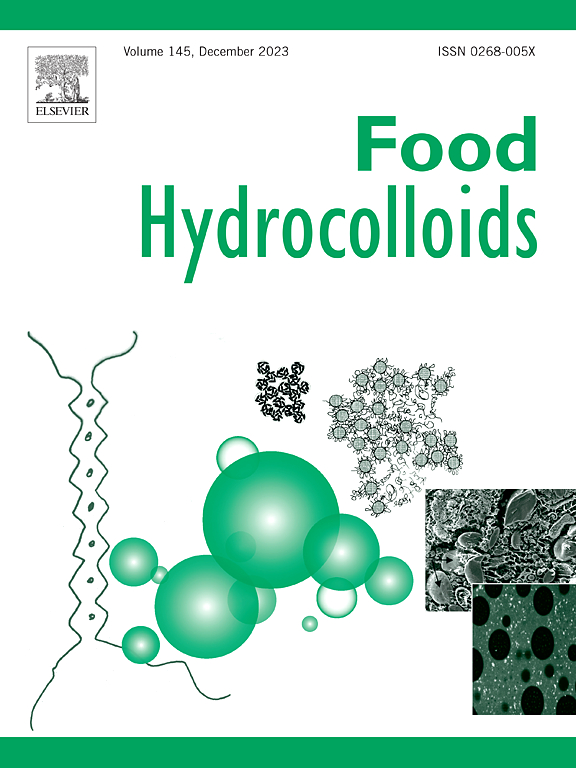The molecular mechanism of enhanced heat-induced polymerization behavior of gluten by mixed β-conglycinin and hydrolysates of glycinin
IF 11
1区 农林科学
Q1 CHEMISTRY, APPLIED
引用次数: 0
Abstract
The selectively hydrolyzed soy protein composed of β-conglycinin (7S) and glycinin hydrolysates (GH) can improve the quality of cereal products by enhancing the polymerization behavior of gluten. To clarify the potential mechanism, 7S and GH were isolated and combined in varied ratios to examine the effects on the thermal polymerization of gluten. The results demonstrated that both 7S and mixed 7S and GH promoted thermal polymerization of glutenin and gliadin by facilitating the formation of disulfide (SS) bonds, with the optimal effect observed at equal level of 7S and GH. 7S primarily promoted the formation of SS bonds by unfolding the gluten molecular structure upon heating, while the synergistic effect of 7S and GH enabled the polymerized gluten to adopt a more folded conformation with stronger stability than that of 7S. The mixed 7S and GH significantly enhanced the polymerization capacity of α-/γ-gliadins into glutenins, especially for γ-gliadin. The polymerization of gliadin and high molecular weight glutenin subunits (HMS) was promoted by mixed 7S and GH, while the involvement of low molecular weight glutenin subunits (LMS) was inhibited. By promoting gliadin unfolding, 7S and GH enhanced the polymerization tendency of γ-gliadin D2, while the folding behavior suppressed LMS PTDUCD1 participation in cross-linking. This study could provide theoretical support for optimizing the gluten network in wheat-based products supplemented with soy protein and for developing efficient improvers to enhance the techno-functionality of cereal products.

求助全文
约1分钟内获得全文
求助全文
来源期刊

Food Hydrocolloids
工程技术-食品科技
CiteScore
19.90
自引率
14.00%
发文量
871
审稿时长
37 days
期刊介绍:
Food Hydrocolloids publishes original and innovative research focused on the characterization, functional properties, and applications of hydrocolloid materials used in food products. These hydrocolloids, defined as polysaccharides and proteins of commercial importance, are added to control aspects such as texture, stability, rheology, and sensory properties. The research's primary emphasis should be on the hydrocolloids themselves, with thorough descriptions of their source, nature, and physicochemical characteristics. Manuscripts are expected to clearly outline specific aims and objectives, include a fundamental discussion of research findings at the molecular level, and address the significance of the results. Studies on hydrocolloids in complex formulations should concentrate on their overall properties and mechanisms of action, while simple formulation development studies may not be considered for publication.
The main areas of interest are:
-Chemical and physicochemical characterisation
Thermal properties including glass transitions and conformational changes-
Rheological properties including viscosity, viscoelastic properties and gelation behaviour-
The influence on organoleptic properties-
Interfacial properties including stabilisation of dispersions, emulsions and foams-
Film forming properties with application to edible films and active packaging-
Encapsulation and controlled release of active compounds-
The influence on health including their role as dietary fibre-
Manipulation of hydrocolloid structure and functionality through chemical, biochemical and physical processes-
New hydrocolloids and hydrocolloid sources of commercial potential.
The Journal also publishes Review articles that provide an overview of the latest developments in topics of specific interest to researchers in this field of activity.
 求助内容:
求助内容: 应助结果提醒方式:
应助结果提醒方式:


